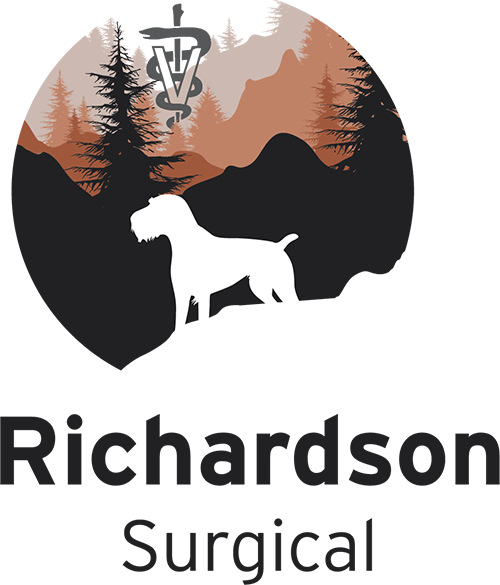
Extracapsular Repair
Extracapsular Repair
The cranial cruciate ligament (CCL), also called the ACL in humans, is a very important ligament in the canine knee. The CCL protects against 3 main forces: internal rotation, hyperextension, and cranial tibial thrust. Injuries to the CCL in dogs can be a result of trauma and degeneration. Most CCL ruptures in the dog are a result of degeneration. This supports the fact that 30-40% of dogs that rupture one CCL will eventually rupture the CCL in the opposite knee.
Cranial cruciate ligament tears can be partial or complete. The amount of clinical lameness (limping) seen does not differentiate partial from complete tears. However, partial tears tend to have episodes of severe lameness after a burst of activity that improves (but does not disappear) over the following 4-5 days as the inflammation in the knee subsides. Because partial tears typically progress to a complete tear, they are treated the same as a complete tear. This repair is another option for the Cranial Cruciate Ligament deficient knee joint that we reserve for patients under 30 lbs.
A torn CCL is a diagnosis made by a physical exam, not X-rays. However, X-rays are needed to demonstrate supportive evidence as well as evaluate joint swelling, the severity of osteoarthritis, joint angle (tibial plateau angle), and to rule out other causes of lameness. The three main physical exam findings most consistently identified in CCL rupture patients are joint swelling, instability (cranial drawer/cranial tibial thrust), and pain with hyperextension of the knee.
